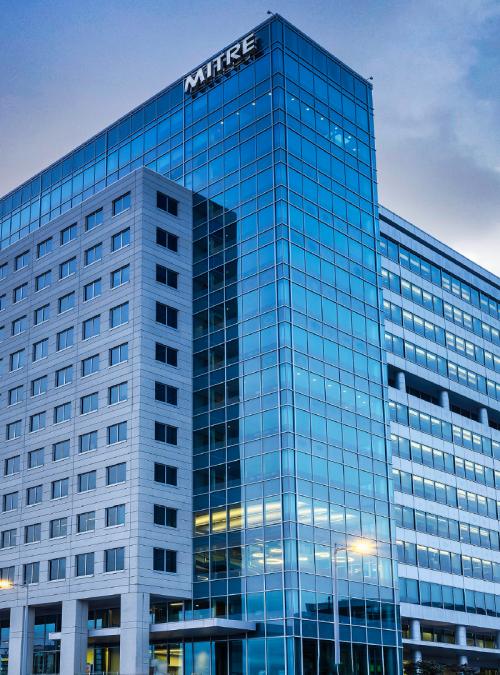FFRDC created framework to bridge "valley of death" in defense innovation.

New Defense Acquisition Framework to Accelerate Technology Transition to Warfighters
McLean, Va., and Bedford, Mass., September 3, 2025 – The National Security Engineering Center (NSEC), a federally funded research and development center (FFRDC) operated by MITRE, unveiled the Transition Maturity Framework (TMaF) today. TMaF is a comprehensive defense acquisition framework developed to streamline the transition of innovative technologies from research labs to active deployment with U.S. warfighters. The framework addresses persistent challenges by providing a structured acquisition approach that includes streamlined methodologies, advanced data-driven decision-making tools, and collaborative processes.
Developed in collaboration with the Department of Defense's (DOD) Operational Energy – Innovation Directorate (OE-I), TMaF aims to accelerate and de-risk technology adoption, bridging the notorious "valley of death" that too often stymies military modernization.
"To maintain U.S. military superiority in an increasingly dynamic global environment, the Department of Defense invests billions annually in research, development, test, and evaluation. However, the path to making those investments operationally impactful often encounters significant barriers," said Keoki Jackson, senior vice president, MITRE National Security. "As a trusted catalyst for markets and ecosystems, MITRE leverages our zero-stake neutrality to bring stakeholders together in pre-competitive environments that accelerate innovations, ensuring they reach the warfighters who depend on advanced technologies to accomplish their missions."
The "valley of death" refers to the gap between the development of a promising technology and its transition into fielded use. Factors such as risk, complexity, and process inefficiencies can lead to delays or prevent technologies from reaching the forces who need them most. TMaF reduces risks, accelerates timelines, and ensures critical technologies are ready for operational use.
"TMaF puts the power of DOD, its people and its processes, not only on the same page, but the right page and allows everyone to coordinate and move projects forward successfully. The result is next-generation technology getting into the hands of warfighters quickly," said RuthAnne Darling, director, OE-I. "Instead of a silo-ed and serial approach from technology development to acquisition, technology innovation, acquisition program managers, requirements professionals, and warfighters – all can track both individual and mutual progress. TMaF clarifies and simplifies the processes and moves everyone collaboratively toward the common objective: state-of-the-art, fielded technology that assists the warfighter in achieving deterrence and battlefield overmatch."
OE-I has adopted TMaF as a core component of its program management and reporting processes. OE-I's use of TMaF brings industry in at the earliest stages of development, enabling direct feedback from warfighters and ensuring that solutions are not only innovative but also deployable and impactful in the field. TMaF enables proposers to conduct and certify self-assessments, providing a clear roadmap for technology transition. OE-I leadership leverages TMaF's data insights to make informed investment decisions, monitor progress, and ensure alignment with warfighter needs.
By standardizing and simplifying the technology transition process, TMaF ensures that next-generation innovations reach warfighters faster, enhancing their ability to achieve mission success and maintain battlefield superiority. TMaF also supports OE-I's congressional reporting and portfolio management through the Operational Energy Management and Innovation (OMNI) tool, ensuring transparency and accountability across all operational energy investments. The OMNI data collection also will help track the impact of TMaF.
As part of MITRE's AiDA (Acquisition in the Digital Age) platform, TMaF exemplifies how tailored acquisition models and digitized resources can modernize federal acquisition processes. Together, AiDA and TMaF empower agencies to overcome bureaucratic delays and bridge the critical gap between technology development and operational deployment.
NSEC will continue to enhance TMaF by expanding its applicability to software-intensive capabilities and is working with OE-I to drive awareness and adoption across the DoD. AiDA and TMaF reflect MITRE's commitment to advancing national security by solving some of the toughest challenges in technology integration and deployment and delivering innovative, actionable solutions for America's national security priorities.
To learn more about TMaF, visit https://aida.mitre.org/tmaf/ or contact tmaf@mitre.org. To learn more about MITRE's overall efforts to reshape defense acquisition and deliver mission-critical capabilities at speed and scale, visit /breaking-barriers.
About MITRE
MITRE’s mission-driven teams are dedicated to driving solutions to our nation’s most pressing challenges. As a not-for-profit research and development organization, MITRE’s staff leverage our unique multi-sponsor vantage point, systems expertise, and innovative solutions to ensure the health, prosperity, and security of our nation.
About the Operational Energy – Innovation (OE-I) Directorate
The OE-I Directorate provides Joint Force policy, oversight, and program management for emerging operational energy technologies. It leads DOD operational energy communities to provide a common operating picture of OE investments. The Operational Energy Capability Improvement Fund (OECIF) and Operational Energy Prototyping Fund (OEPF) programs develop and prototype technologies that provide tactical overmatch for our warfighters and allies. OECIF and OEPF apply cutting-edge science and technology to developing and demonstrating innovative, cost-effective, supportable energy solutions that meet joint requirements and maintain freedom of action.
Media Contact: Lisa Fasold, media@mitre.org